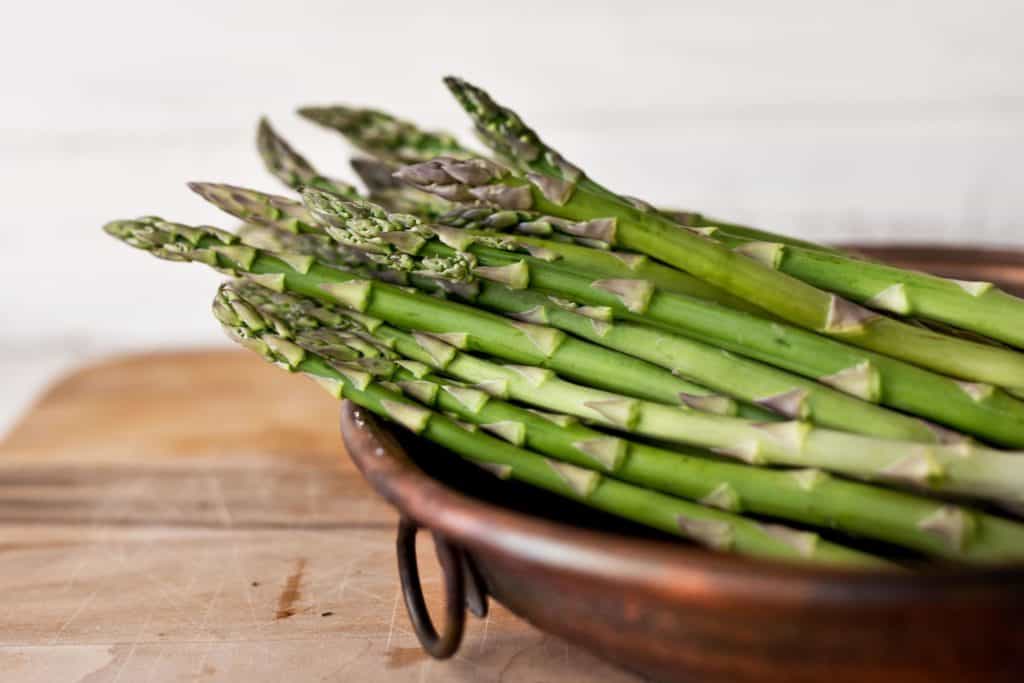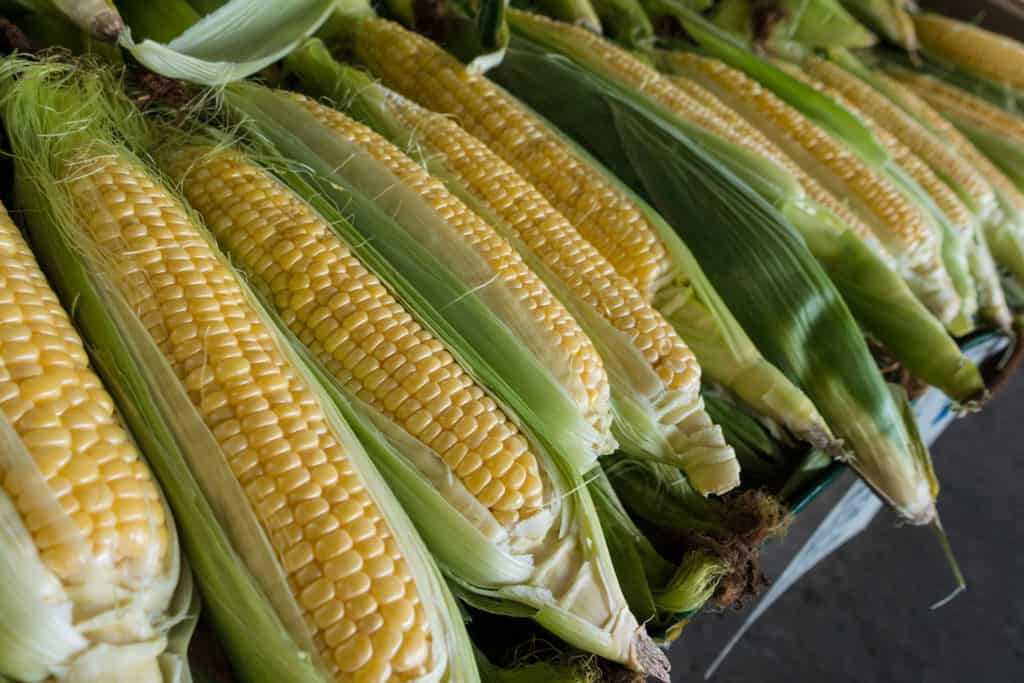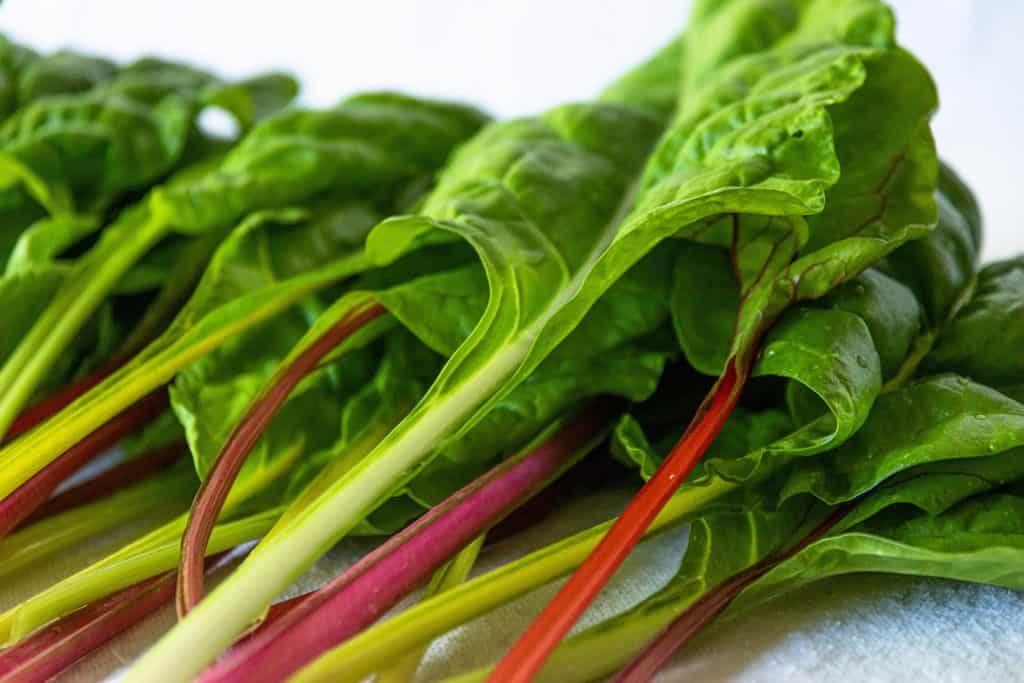It seems like there’s a secret code when it comes to choosing the best fruits and vegetables. Tap the melon right here…squeeze the tomatoes just so…toss the asparagus in the air and watch how it lands…
(Don’t really toss the asparagus, please!)

Although there are specifics to look for in different produce, there are also some general rules that you should follow when making your selections.
First, judge with your eyes. Avoid fruits and vegetables with bruises or soft spots, and skip anything that looks dried out or wilted.
Then, judge with your hands. Produce should usually feel “heavy for its size.” That weight is from water, which means the produce is plenty juicy and hasn’t dried out.
Also, consider when you’ll eat what you’re buying. Green bananas are okay if you plan to eat them later in the week. For avocados, choose softer fruit if you’re eating right away, and firm if it will sit in the pantry for a few days.
And finally, it doesn’t have to look “perfect” to be good. That apple from the local farmer’s market that isn’t quite round? As long as it’s not bruised or mushy, it’s still good. In fact, if it was grown locally, that slightly misshapen apple probably has more nutrients and richer flavor than the picture perfect ones at the grocery store!
Now that we’ve covered some of the basics, we’re going to dive into some specifics. Here’s what to look for in your favorite fruits and vegetables!
Artichokes
Artichokes should feel solid and weighty. Leaves should be thick and tightly closed, and fresh leaves will squeak when you rub them.
Asparagus
Different varieties of asparagus can be green, white, or purple, but it should be vibrant. Tips should be tightly closed. Pro tip: store your asparagus in the fridge with the ends in a glass of water to keep them crisp!
Blueberries
Size isn’t important for blueberries. Instead, you want to focus on color. They should be a deep purplish-blue, even approaching black. And they should be firm, plump, and smooth.
Broccoli

Florets should be tight and vibrant green. Avoid yellowing florets and dried out stems.
Brussels Sprouts
Smaller Brussels sprouts are often sweeter and more tender than large ones — although it may be hard to find the smaller ones at the grocery store! Look for a bright green color and tight leaves. Avoid yellowing leaves or black spots.
Carrots
With carrots, shape matters. A gnarled carrot grew under stress, and may not be as sweet. Look for that classic “carrot” shape in a bright reddish-orange, and avoid cracked or shrivelled veggies.
Celery
Look for tightly packed stalks that are plenty crisp. The leaves on top should be a bright pale green.
Cherries
Judging cherries by color can be tough, since different varieties can be bright red, deep mahogany, or even a light peach. Instead, look to the stems, which should be green and pliant.

Corn
With kernels hidden behind the husk, how do you know what you’re getting? Actually, the husk itself tells you a lot about the goodness within. Look for a bright green husk that’s tight against the corn and just a bit moist. If it’s dried out, the kernels inside may be dry too.
Grapefruits
Give it a (gentle) squeeze! The skin should be smooth and a bit springy. Color isn’t so important for grapefruits.
Grapes
Grapes should be firm and plump — although your local farmer’s market varieties may be a bit softer. Look for green, pliable stems for freshness.
Green Beans
Wide green beans stayed on the plant too long, so look for narrow beans instead. And they should snap, instead of bend.

Leafy Greens
Lettuce, spinach, and leaf lettuce are pretty easy — look for crisp leaves and avoid any that are turning wilted or slimy.
Lemons & Limes
Give them a sniff. Citrus should be fragrant and heavy for its size.
Oranges
Look for firm, smooth skin. Avoid any that feel spongy, but don’t worry about color.
Peaches
Like citrus, judge peaches by your nose. They should smell peachy and fresh. And they should be firm, but not hard.
Potatoes
Potatoes should be firm and smooth. Sprouts often mean a potato is older, so you may want to avoid them. But if it’s just started to sprout and otherwise feels firm and heavy, you could cut the sprouts off and still have a tasty tuber.
Strawberries
Berries should be bright red with fresh green leaves. Sometimes, the biggest berries are not as sweet as the small-to-medium ones. So you may want to avoid a carton of monster berries.
Tomatoes
Choose fragrant tomatoes that smell sweet and earthy. If it still has leaves, they should be fresh and green.
Watermelon
Look for the tell-tale “field spot” on a watermelon. That yellow spot is where the watermelon ripened as it sat on the ground. Find a bigger, darker field spot to show that it ripened on the vine longer.
As regenerative farmers, we think buying local is always the best option. So stop by your local Bastrop or Austin farmer’s market to pick up the freshest and tastiest produce for your summer cooking!

